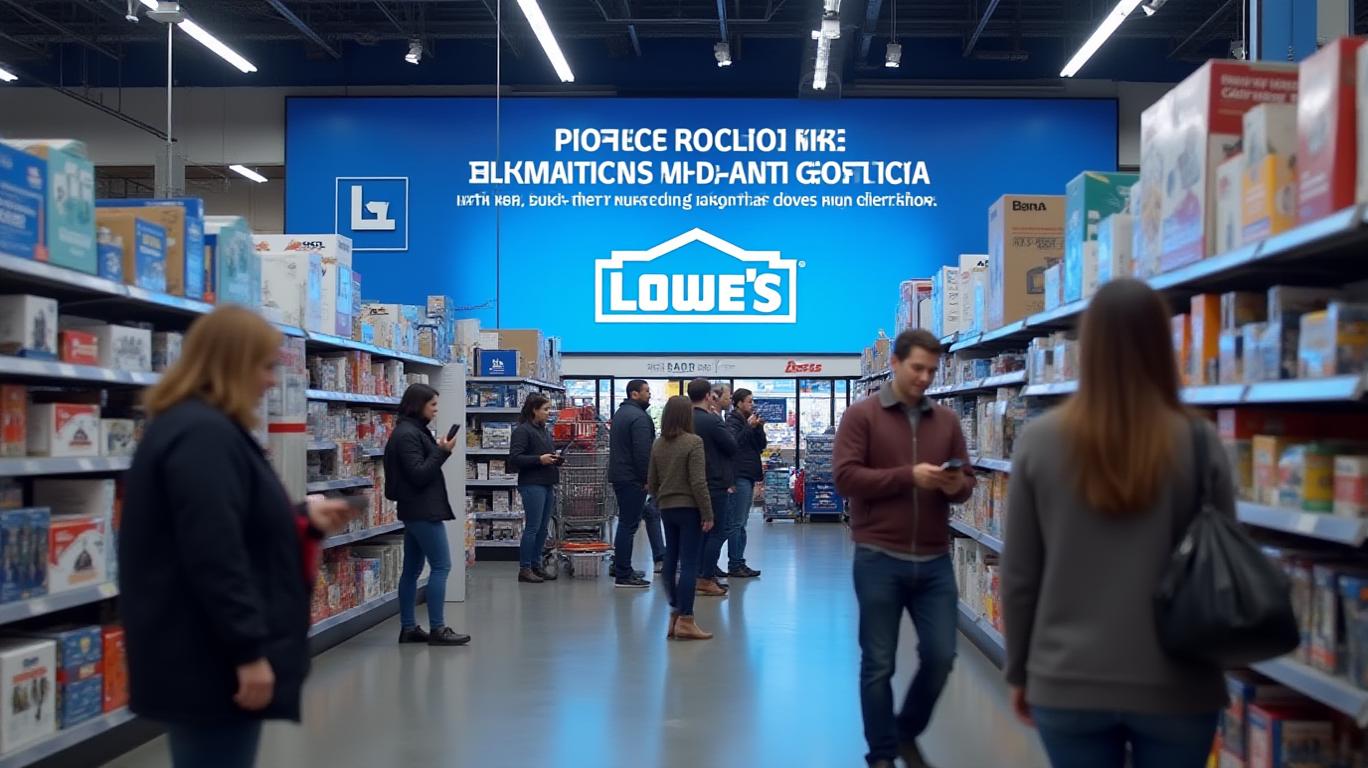Lowe's E-Commerce Pivot: How Mirakl Could Tip the Scales Against Home Depot and Amazon
In a retail landscape dominated by the gravitational pull of Amazon and the entrenched might of Home Depot, Lowe’s is making a bold bet on technology to redefine its future. The company’s partnership with Mirakl, a French marketplace-as-a-service platform, is no mere incremental tweak—it’s a strategic masterstroke that could vault Lowe’s into a leadership position in the $600 billion U.S. home improvement market.

The E-Commerce Revolution Lowe’s Is Building
The core of Lowe’s strategy hinges on transforming its website into a dynamic, third-party-driven marketplace. By leveraging Mirakl’s technology, Lowe’s is enabling thousands of sellers to list products directly on lowes.com—think specialty tools, custom furniture, and niche home décor—without requiring Lowe’s to stock or manage inventory. This move addresses a critical gap: while Home Depot’s online presence remains siloed to its own inventory, and Amazon lacks the physical-store integration, Lowe’s is combining the best of both worlds.
The benefits are threefold:
1. Margin Expansion: Marketplace sales operate on a commission model, boosting profitability.
2. Category Dominance: Access to niche products attracts pro contractors and DIY enthusiasts alike.
3. Omnichannel Synergy: Customers can return marketplace purchases to any of Lowe’s 1,700 stores, a unique advantage over pure-play e-commerce rivals.
Outmaneuvering the Competition
Home Depot’s reliance on its own inventory limits its ability to offer the long tail of products that drive impulse purchases. Meanwhile, Amazon’s lack of physical stores means it can’t replicate Lowe’s “buy online, return in-store” convenience.
Lowe’s is also doubling down on AI, launching Milo, an OpenAI-powered virtual assistant, to guide customers through complex projects. This not only improves conversion rates but also creates a moat against Amazon’s recommendation algorithms.
Moreover, Lowe’s supply chain diversification—aiming for 60% U.S.-based sourcing—reduces vulnerability to global disruptions, a critical edge as inflation and trade tensions persist.
The Numbers Tell the Story
Lowe’s Q1 2025 e-commerce sales rose 6% year-over-year, outpacing Home Depot’s flat online growth. The Mirakl partnership is expected to accelerate this trend, with analysts projecting marketplace revenue to hit $2 billion annually by 2027—nearly doubling Lowe’s current e-commerce footprint.
Why Act Now?
Investors should note two critical catalysts:
1. Timing: The Mirakl integration is rolling out in Q2 2025, with third-party listings set to expand rapidly in the coming quarters.
2. Valuation: At 14x forward earnings, Lowe’s trades at a discount to Home Depot (16x) and Amazon (45x), offering upside as its strategy gains traction.
The risks? Execution delays or seller attrition could stall momentum. But Lowe’s track record—its acquisition of Artisan Design Group to target homebuilders, paired with its Pro Rewards program—suggests management is executing with precision.
Final Analysis: A New Era for Retail
Lowe’s isn’t just keeping pace—it’s redefining the game. By merging physical-store scale with e-commerce agility, it’s building a platform that neither Home Depot nor Amazon can easily replicate. For investors, this is a rare opportunity to bet on a proven retailer pivoting to a higher-growth, higher-margin future.
The question isn’t whether Lowe’s can compete—it’s already winning. The real question is: Why wait to capitalize on it?
Action Item: Consider adding Lowe’s to your portfolio ahead of its Q2 2025 results. The Mirakl-powered shift is just beginning—and the best returns are yet to come.

Comments
No comments yet